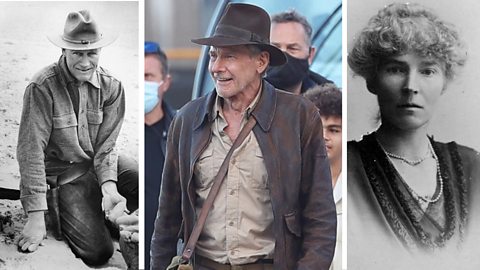Much of the history of the United Kingdom is told in its ruins - many of which are more hidden, and less well-known, than others.
Millions of people know all about the likes of Stonehenge, Hadrian's Wall and Whitby Abbey - but there are countless other ruins waiting to be discovered by more of us across England, Wales, Scotland and Northern Ireland.
Some could be said to be hiding in plain sight, while others are very well-hidden indeed. Here are the stories of just a few of the UK's more obscure ruins.
Anglesey Barracks: Not exactly five-star accommodation
Names can be deceptive.
Anglesey Barracks are not on the Isle of Anglesey - nor have they ever been home to any military personnel.
The twin rows of now abandoned houses in Caernarfon, Wales, were, instead, somewhere for the quarrymen who worked at the nearby Dinorwic Quarry from the 1870s to rest their heads after long shifts.
There was, however, an Anglesey connection because many, though not all, of these workers travelled from the island to work at the quarry and lodge in the 22 cramped cottages. Four men had to share each cottage, which included just a bedroom and a living room and had no running water or electricity.
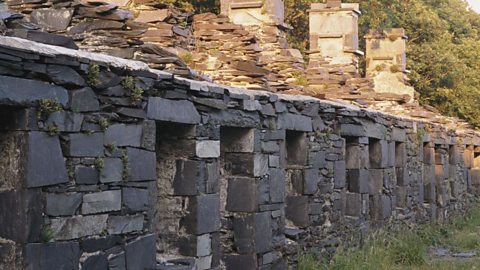
Though there was nothing luxurious about this most basic of accommodation, the barracks were situated in a beautiful spot - perched on a hillside overlooking the romantic ruin of Dolbadarn Castle and the lake by the village of Llanberis - Llyn Peris.
The barracks were finally closed in 1937, after it was decided they were unfit for human habitation. But curious visitors still make a beeline for the ruins - which are partially hidden by nature - by following marked paths from Llanberis.
Piercebridge: A vital artery in Roman Britain
The ruined remains scattered on the ground at Piercebridge were once part of a large bridge that carried a Roman road - Dere Street - across the River Tees, linking the city of York with the village of Corbridge, near Hadrian's Wall.
Today they lie on the south bank of the river in Darlington, County Durham, which has moved northwards since the days when the bridge was built.

Piercebridge had once been ruled by the Brigantes Celtic Tribe, which was conquered by the Roman army in the AD70s.
The remains of the bridge were discovered during gravel quarrying in 1972 - and the bridge was declared to be just one part of a large Roman site which also included a fort known to have existed from at least the third Century.
Much of the fort now lies beneath later buildings but, intriguingly, excavations in the 1970s revealed part of the wall and ditches surrounding the fort, along with the road that ran around its perimeter.
Dere Street would have been used by an enormous amount of military traffic - with troops and supplies being transported between York and the approach to Hadrian's Wall.
Layd Old Church and Graveyard: A resting place for historical figures
The picturesque ruins of Layd Old Church and Graveyard have an important place in the history of Northern Ireland.
There are two gravestones which hold particular interest for historians and visitors to this monument set in a steep-sided valley close to the East Antrim coastline.
At the western end of the church a large Celtic cross marks the resting place of a man who was sometimes called "the father of Belfast medicine" - James McDonnell (1763-1845). He was the driving force in the setting up of the Belfast Fever Hospital and Dispensary, which later became the city's General Hospital and then the Royal Victoria Hospital.
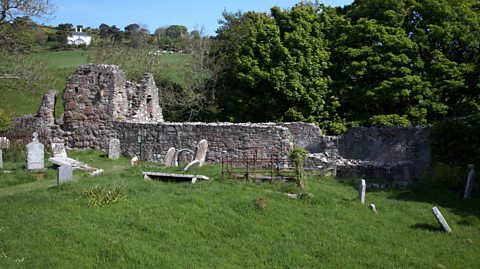
Meanwhile, to the left of the graveyard's entrance is a Celtic cross shaped like a holestone - a standing stone with a hole in the middle - said to have been brought to Ireland by a Scottish family known as the MacDonnells, whose powerful clan shaped Irish politics in the 15th and 16th Centuries. The holestone sits by the grave of clan descendant Frank MacDonnell, who died in 1861.
Layd Old Church's history is thought to date back to its time as a Franciscan friary in the 13th Century. It was converted into a Church of Ireland under three generations of the McArthur family (1696-1796), who often preached in the Irish language, before being abandoned in 1800 - though the graveyard continued to be used. It is now a protected site of historical importance.
Madron Holy Well: The clouties show the way
You will know when you have arrived at Madron Holy Well by the colourful strips of cloth - also known as clouties - that are tied to the branches of the trees surrounding it.
Visitors need to be dedicated - and in wet weather will need their wellies on - to reach the well, which can be found along an often boggy path just north of the village of Madron, about a mile from Penzance in Cornwall. The well head itself is marked by a circle of granite slabs, which were re-laid in the 1980s.

The displaying of clouties has been a traditional custom through the ages at healing wells, particularly at the one in Madron. The rags were torn from an area of the body where there was pain and then tied on a tree close to the well. As the flimsy material disintegrated over time, so the person's pain was supposed to be relieved.
Madron Holy Well has been a site of pilgrimage for centuries, with the earliest reference to it being in 1640.
St Dunstan In The East Church Garden: Yes, this really is London
For many people, finding this quiet and idyllic spot - which is less than 10 minutes walk from the Tower of London - is like discovering one of the capital's hidden gems.
The Church of St Dunstan - a Grade I listed building - was originally built around 1100, but severely damaged by the Great Fire of London in 1666.
It was decided to merely patch up, rather than rebuild, the church - though architect Sir Christopher Wren (who famously designed St Paul's Cathedral, which was built between 1675 and 1710) added a steeple and tower between 1695 and 1701.

It was damaged again during the Blitz of 1941, though its steeple and tower survived the German bombing. After World War II, it was again decided St Dunstan’s would not be rebuilt - then, in 1967, the City of London opted to turn the remains into a public garden, which opened in 1970.
Today, it is a secluded attraction - for those in the know! - with greenery climbing around the church’s glassless windows and historic walls. The garden, which includes benches and a fountain, has been described on one official website as an “oasis” in the heart of the city.
Edin's Hall Broch: A uniquely Scottish structure
Edin's Hall Broch is a rare example of a lowland broch - a uniquely Scottish roundhouse fortification, usually only found in the north and west of the country.
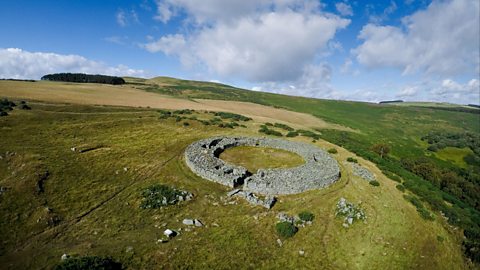
There are more than 500 brochs in Scotland, with only a handful in the lowlands - a large area to the south east of the highlands which includes the cities of Glasgow and Edinburgh.
This broch in the Scottish Borders is thought to date back to between 0-200 AD, and is surrounded by the remains of a fort which predates it by about 2,000 to 2,500 years. Nearby, meanwhile, is another nationally important landmark - Abbey St Bathans Woodlands, an SSSI (Site of Special Scientific Interest) as it is home to some of the only remaining ancient deciduous woodland in the area.
Edin's Hall is situated in a corner of the fort, within its own enclosure, and the remains of a number of other roughly circular structures can also be seen close by. These low stone footings mark the positions of former houses and other structures.
The broch's 22 metre (72 foot) diameter makes it much larger than the typical Highland broch and also suggests it may not have been as tall as others - though it is possible that it could once have been twice its current height of two metres (6.5 foot).
Anyone interested in visiting the broch should be aware that reaching it involves a challenging hike along the Whiteadder Water.
This article was published in January 2025
Three incredible ancient ruins that you might not have heard of
Petra, Pompeii and Machu Picchu might grab the headlines, but join BBC Bitesize as we explore the amazing ruins of Hegra, Herculaneum and Ollantaytambo.

Archaeology: The ancient wonders we're still waiting to find
The ground may still be hiding historic settlements or intriguing remains
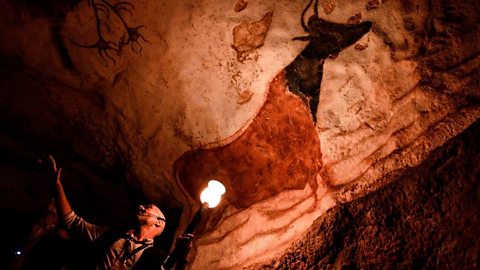
Indiana Jones: Meet four of history’s archaeological adventurers
The men and women who unearthed history over the decades
